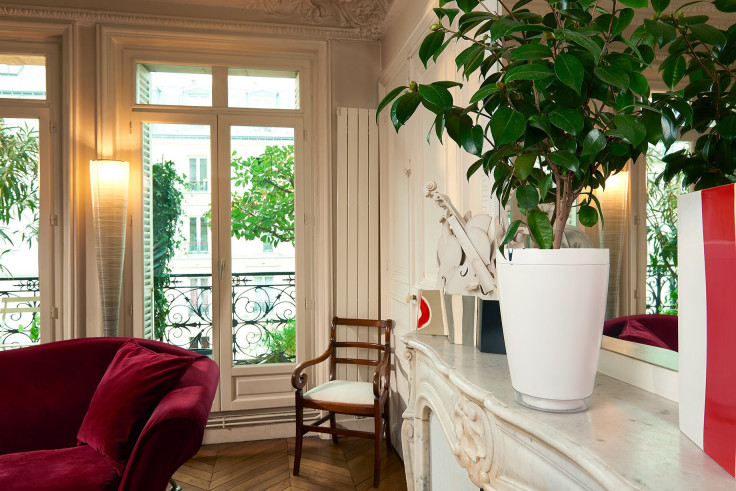CES 2015: Smart Flowerpot, Anyone? Startups Put Sensors Everywhere

Wearable devices, fitness trackers, connected home gadgets and smartphones -- what do all these things have in common? Sensors, which are perhaps the most prevalent technology thus far at the 2015 International Consumer Electronics Show in Las Vegas.
From countless fitness devices capable of measuring heart rate to wearable wristbands designed to detect and track mood, sensors can be found in most of the technology exhibited at CES Unveiled, the tech conference’s introductory event Sunday evening.
"These sensing devices are coming down in cost to pennies per unit, and it's creating all sorts of products,” said Gary Shapiro, president and CEO of the Consumer Electronics Association, which organizes CES.
The rise in smartphone sales in the past five years has driven down the cost of their components, including the cost of sensors, Shapiro said. The cheaper price of sensors has in turn allowed entrepreneurs, developers and gizmo tinkerers to come up with new devices capable of measuring almost anything.
French consumer tech product company Parrot, for example, used CES Unveiled to announce two interesting sensor-powered products: the Parrot Pot and the Parrot H2O -- two devices that will water plants. The Pot, which is a smart plant pot, and the H2O, a device that is inserted into not-so-smart plant pots, use a combination of light, moisture and other measurements to analyze what plants need to grow. Whenever the gadgets sense plants need to be irrigated, they release the exact amount of water necessary.
But it’s not just a drop in price that has sparked the rise in sensor-equipped products. Philo Northrup, president of Reno, Nevada, startup Tao, said sensors are now available in smaller sizes and give more accurate information than ever, allowing companies to stick sensors in more devices and give users precise data.
In Northrup’s case, his company uses pressure sensors for its two isometric exercise devices: the handheld Tao WellShell and the Tao Chair, a leather chair featuring oddly shaped armrests equipped with sensors that detect how much force users apply when they sit down and exercise. The Tao Chair and WellShell use that data collected by their sensors to give users instant feedback on the number of calories they burn every time they are used.
“We didn’t invent the pressure sensor -- there have been scales around for a long time -- but [the Tao WellShell] is the one you can carry around in your pocket,” Northrup said.
Right now, the tech industry is seeing a wave of innovation in the use of sensors, said Visit Thaveep, CEO of Zensorium, a Japanese company exhibiting the Being, a wearable fitness band that uses numerous sensors to detect mood. What we’re seeing now is companies trying to “crack the code” with sensors, Thaveep said.
“There’s huge innovation as far as how we actually extract information and make it meaningful,” Thaveep said.
© Copyright IBTimes 2024. All rights reserved.






















